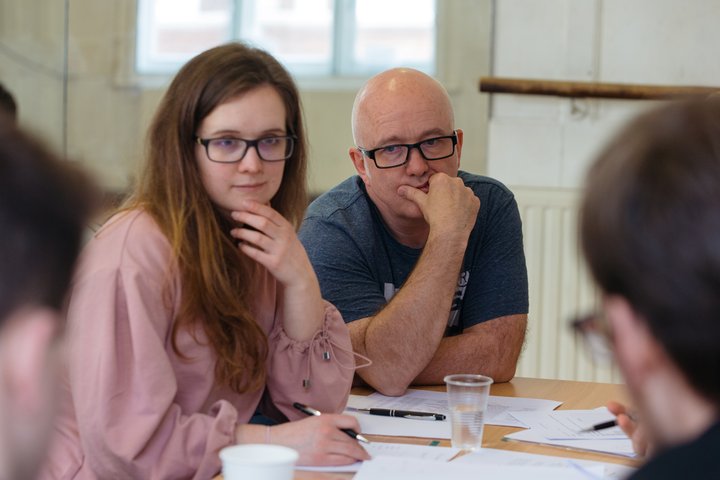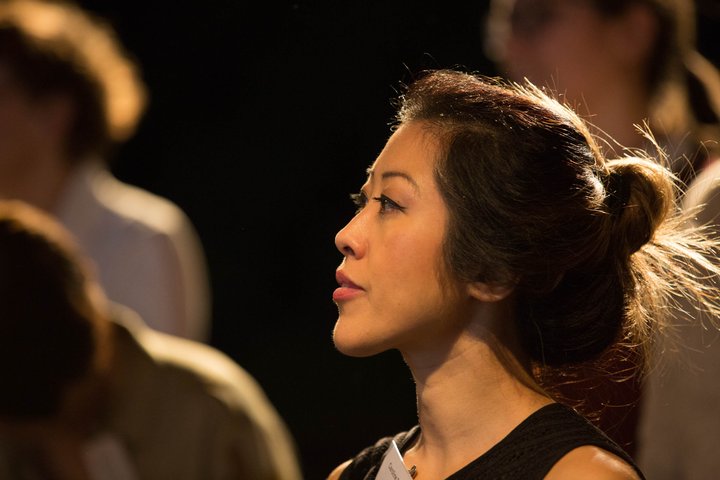Leading in a virtual environment: analytical leadership
RADA Business tutor and Leadership Programme Director Claire Dale looks at analytical leadership
Over the past few weeks, the pace of change has been so rapid that for many of us, finding time to reflect has been difficult. In challenging times, leaders often have to make decisions – but as we all continue to absorb and adapt to changing guidance, Leadership Programme Director Claire Dale explains that it is also important to try and make time to analyse our responses.
Previously, Claire has talked about how we can consider our bodies as representing four modes of leadership – our feet help us with grounding, our centre allows us to connect to our inspiration, and our hearts allow us to consider situations with compassion.
Here, Claire looks at how our heads can help us access our analytical leadership capabilities.

Accessing different types of thinking
"After the first wave of intense activity to adapt to our new reality – working from home, training and coaching online, getting to grips with technology like never before – when I finally had a quiet day to think, I became aware that having time to reflect is critical.
I am also aware that a specific type of deep thinking comes only with space and time, when there are few demands on our nervous system. By settling ourselves and leaving our worries to one side, we can arrive at a physical, mental and emotional state of discernment. When this happens, we are more easily able to digest our recent experiences and connect with what is happening, as well as what needs to be done next. This is reflective thinking.
Of course, there are other types of thinking. For example, divergent thinking – what some would call creative or innovative thinking – involves generating many ideas from an initial stimulus. There's also convergent thinking, which is the ability to keep a cool head under pressure and to make one (hopefully high quality!) decision out of several options.
Leaders need to be able to think in a variety of ways, and they also need to be able to switch between these different types of thought. In this way, what we call analytical thinking is not a dry review of data but a rich, interweaving of information from multiple sources, including our guts and our hearts, as well as our instinct and intuition.
Analytical thinking
In our Embodied Leadership framework the Analytical Leadership mode is in the head. More specifically, it is in the pre-frontal cortex of the brain, which is the part of the brain that we associate with clarity and vision.
A leader in analytical mode is mature, sensible and sensitive, seeing broadly and deeply. They are humble and intent on making wise decisions for the greater good.
In a complex world, decision-making falls to leaders at all levels, and, as we all know, the current Covid-19 crisis has many layers of complexity and uncertainty. The responsibility of leaders today is great, so what can leaders do to ensure they don't lose their heads and can instead make high quality decisions at this difficult time?

Try these techniques
Step one: accessing your analytical leadership in the moment
When you are faced with a situation where you need to think on your feet, follow these steps:
- Ground yourself and balance your weight evenly across your supports – either your feet or your chair. The body is constantly sending messages to the brain about how balanced we are, so having a good connection through the soles of your feet and balancing your weight evenly can increase clarity of mind and reduce the risk of snap judgements.
- Connect with your breath. It is a physiological fact that a steady breathing pattern generates more coherence in the brain and in our brainwave patterns. Also, our breath connects us with the sensations in our body that are our emotions. This helps us to take the emotional temperature of a situation.
- Take information from a wide variety of sources. Combine empathy – listening intently to what people say and how they say it; asking them what they need and providing it – with an ability to face facts and describe clearly the realities of what we are facing. Entrust people with the truth.
- Have the courage of your convictions. Articulate your words clearly, so that you are delivering even the most difficult messages with clarity of speech combined with compassion.
Step two: clarity
A series of exercises can transform your clarity of speech. Prepare the articulators in your mouth by practising the following exercises:
- Blow through your lips, to ease tension and create mobility.
- With your mouth closed, move your tongue to all the corners of your mouth, pushing into all the surfaces. This warms up the root of the tongue muscle.
- Smack your lips loudly a few times.
- Take a wine bottle cork and place it lightly between your teeth, length-ways.
- Then try to speak the months of the year – January through to December – as clearly as you possibly can, around the obstacle of the cork.
- Afterwards, take the cork out and say the months again. You should notice that your words have greater clarity, and your mouth feels more agile.
- Use the above as a daily warm up before you embark on a series of video conference calls.
- Take time to think, breath and reflect before you speak or act.
Join us on our Virtual Stage
Communicating across virtual media such as video calls is now a fundamental part of our everyday working life.
Find out how Claire and our expert team of tutors can help you to refine your leadership whilst you're performing on a virtual stage by taking a look at our range of virtual training solutions.
Alternatively, contact us on +44 (0)20 7908 4830 or ask@radabusiness.com.
